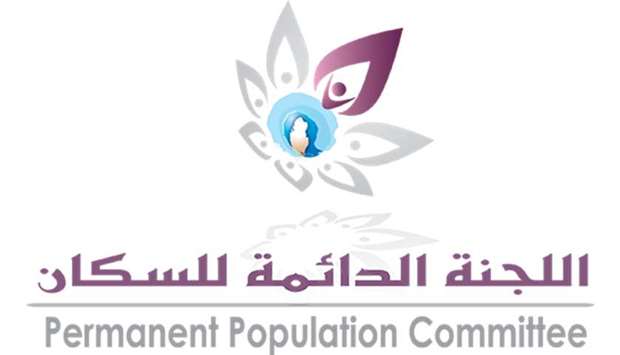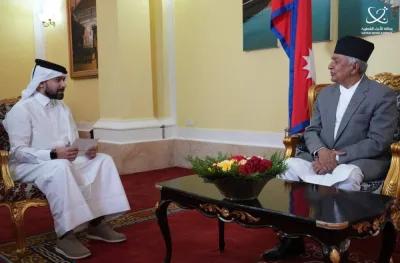The Permanent Population Committee (PPC) will be celebrating Qatar Population Day 2020, virtually on social media, in the light of the precautionary measures imposed to limit the spread of the new Coronavirus (Covid-19).
The PPC has been celebrating Qatar Population Day in late October of each year, with the aim of raising awareness of population issues, in the context of comprehensive development plans and programs, especially the Qatar National Vision 2030 and the National Development Strategy.
In its celebration this year, the committee will be focusing on highlighting Qatar's population policy (2017-2022) and introducing the Committee and its achievements, especially with regard to achieving harmonization between population requirements and sustainable development.
Since its establishment under Cabinet Resolution No. 24 of 2004, the PPC has developed the first population policy (2009-2014) and the second (2017-2022), with the aim of improving the quality of life of Qatar's population, both citizens and residents.
In this context, Chairman of the Committee, HE the President of Planning and Statistics Authority, Dr. Saleh bin Mohammed Al Nabit stressed the importance of the Committee's role in following up the implementation of the State's population policy in cooperation with all partners as well as the implementation of sectoral policies related to Qatar's national development strategies (2018-2022).
Qatar Second Population Policy included a set of plans and programs aimed at bringing about quantitative and qualitative change in the population variables, in order to ensure a decent life for the residents of the State of Qatar, raise their capabilities, expand their options and raise their levels of participation in the advancement of the Qatari society through six axes, the first of which is the population and the workforce. It aims to control population growth rates during the period from 2017 to 2022, leading to a gradual reform of demographic imbalances.
The second axis is concerned with urban growth, housing and the environment. It aims to develop and create urban centers far from Greater Doha, provide a clean urban environment and ensure the sustainability of natural resources, while the third axis focuses on education, training and youth and aims to raise the quality of education and training and expand opportunities for the participation of youth of both genders in society and in public life.
The fourth axis is related to public health and reproductive health. Its goal is to improve the general health of the population, improve the reality of reproductive health and provide its services in line with the increase in the population and its geographical distribution.
The fifth axis for women and childhood came to support the societal participation of women, and to provide the necessary conditions to increase their participation in the labor force while maintaining family cohesion and ensuring a safe environment for children.
The sixth axis is related to the elderly and persons with disabilities, in an effort to enhance their active participation in various community activities, enable them to integrate into society and to continuously improve their means of care.
The mission of the Permanent Population Committee (PPC) was not limited to setting the population policy, but also to follow up the implementation of that policy in cooperation with ministries and governmental and non-governmental bodies concerned with implementing its program of action, as achieving the objectives of the population policy depends on the concerted efforts of all ministries, institutions and bodies in the State and coordination between them.
Six working groups supervised by the PPC follow up the implementation of the population policy program of action, as each group follows up the implementation of one of the mentioned axes, according to questionnaires designed by the experts of the committee's technical office to monitor the progress made by the authorities concerned with implementing the population policy and its obstacles.
As a result of the annual follow-up of the population policy program of action, the committee completes the annual national report on the State of Qatar's population, and put it in the hands of decision-makers in the country to take whatever they deem appropriate regarding the recommendations contained therein for the demographic and developmental situation in the country.
In addition, the PPC, since its establishment, has made many achievements, such as the issuance of 18 studies as part of the "Population Studies" series, 46 issues of the "Population" magazine, and 6 reports on "Qatar Population Status", and a group of other published and unpublished reports and studies.
In a related context, the committee managed to organize several meetings, conferences and workshops on population and development, on the Gulf, Arab and international levels.
The committee had its contribution to the meetings of the Population Policy Committee in the GCC countries, where it actively participated in discussing the general framework of the population strategy, and in designing a questionnaire for population data.
The PPC has also contributed to promoting joint Arab population work by participating in many activities, especially the meetings of the Arab Council for Population and Development of the Economic and Social Council of the Arab League. At the international level, the committee is linked to an agreement with the United Nations Population Fund, under which the two parties cooperate in various issues related to population and development.
The committee continues to fulfill its role and specializations, implement its programs related to population issues and the workforce, and in the fields of health, education and others, and follow up the national efforts aimed at achieving the population policy document in its various axes.



